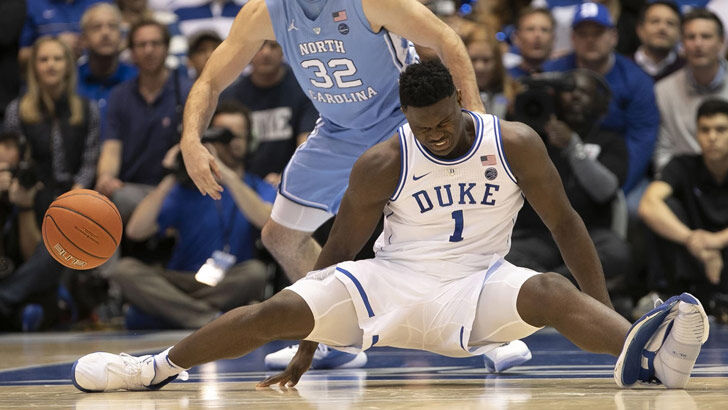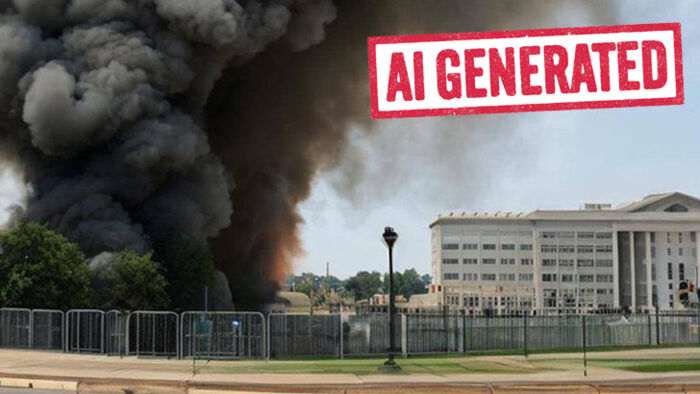AI and fake tweets: How to tank a share price in seconds
By Tom Watson
A picture may be worth a thousand words, but its impact can certainly be worth more than a few thousand dollars.
Last week an image depicting an explosion near the Pentagon briefly sparked concern as it did the rounds on social media. The image, which originated from a verified Twitter account and was even spread by a few media organisations, was a fake though - one which seems to have been produced using artificial intelligence.
While the image was fraudulent, its impact was real, as it appears to have been responsible for a modest, but noticeable, drop of around 0.3% in the S&P 500.
The Associated Press also reported that the price of gold and treasury bonds - classic safe havens for investors - started to edge up at the same time as the image was being shared.
Lisa Given, professor of Information Sciences and director of RMIT's Social Change Enabling Impact Platform, says that artificial intelligence tools are only likely to make the spread of information easier.
"What I say to people is that these technologies really just heighten misinformation - take it to a next level if you will - because of the scale and scope of what can be accomplished with these tools.
"And you can see when a financial market is involved, that's a problem. It's going to have a real world impact. Shareholders are going to have an outcome that they're not going to be happy with because someone shared a photo that turned out not to be true."
As a result, Given says individuals and media outlets will need to step up their game in scrutinising the information they come across before sharing it.
"One of the challenges right now with technology is that it's so easy to just hit the retweet button and pass it along and it can then kind of take on a life of its own.
"I think the key thing is, especially for media organisations, to pause for a minute and do that verification and ask where did it come from and what's going on? But our natural tendencies are to get that story out."
While relatively small, the market drop following the circulation of the faked Pentagon image shows how susceptible markets and companies can be to factors beyond typical catalysts of change like economic downturns or subpar results.
It's by no means the only time in recent years when a seemingly small act - whether intentional or not - has had a marked impact on a market or company's share price. Here are a few other examples:
Fake tweet rocks Eli Lilly
In another demonstration of the power of a tweet, the share price of American pharmaceutical company and insulin manufacturer, Eli Lilly and Company, nosedived following a simple tweet from what turned out to be an imposter account in November last year.
Making use of a fake handle with the Eli Lilly name along with a purchased blue tick verifying the account - which, at the time, had just been made available to all accounts - a user impersonating the company posted a tweet announcing that Eli Lilly would be making insulin free for customers.
That wasn't true, but the fallout was real, as Eli Lilly's share price fell by more than 4% from US$368.72 on November 10 to US$352.30 on November 11.
The company's share price did recover in the weeks following and is now trading at around US$430 a share. And Eli Lilly has since taken over the handle used by the imposter and is now using it as its own.
Activist hoax hits Whitehaven Coal
Closer to home, another piece of fraudulent information had an even bigger effect on the share price of Australian mining company Whitehaven Coal.
In January 2013, environmental activist Jonathan Moylan sent out a phony media release purporting to be from ANZ announcing that the bank was pulling out of a funding deal for a new coal project set to be undertaken by Whitehaven.
The fake release was distributed to a number of media outlets, some of which ended up running with the news before it was identified as being a hoax. The result was that Whitehaven Coal's share price plunged by more than 8% and hundreds of millions of dollars were wiped off its value.
Moylan, who apologised to investors who had been impacted by the hoax, ultimately pleaded guilty to disseminating false information to the market for which he was sentenced to a year and eight months in jail, but he was immediately released on a good behaviour bond.
Nike shares socked by sneaker malfunction
Of course, releasing fake photos, tweets or even press releases aren't the only atypical acts that can cause the share price of a company to fall. Sometimes it can be as simple as a shoe breaking.

In February 2019 sportswear giant Nike saw well over US$1 billion dollars wiped off its market cap in a day following a high-profile footwear malfunction at a college basketball game.
Zion Williamson, who is now an NBA star but was playing for his college team Duke at the time, was at the centre of the strange occurrence when one of his Nike sneakers suddenly ripped apart mid-game as he was dribbling the ball, sending him to the ground.
While Nike was briefly left reeling from the reputational and share price hit it suffered as a result of the malfunction, Williamson also came off second best as he was injured in the fall. Both Williamson, and Nike's share price, have since bounced back.
Get stories like this in our newsletters.



